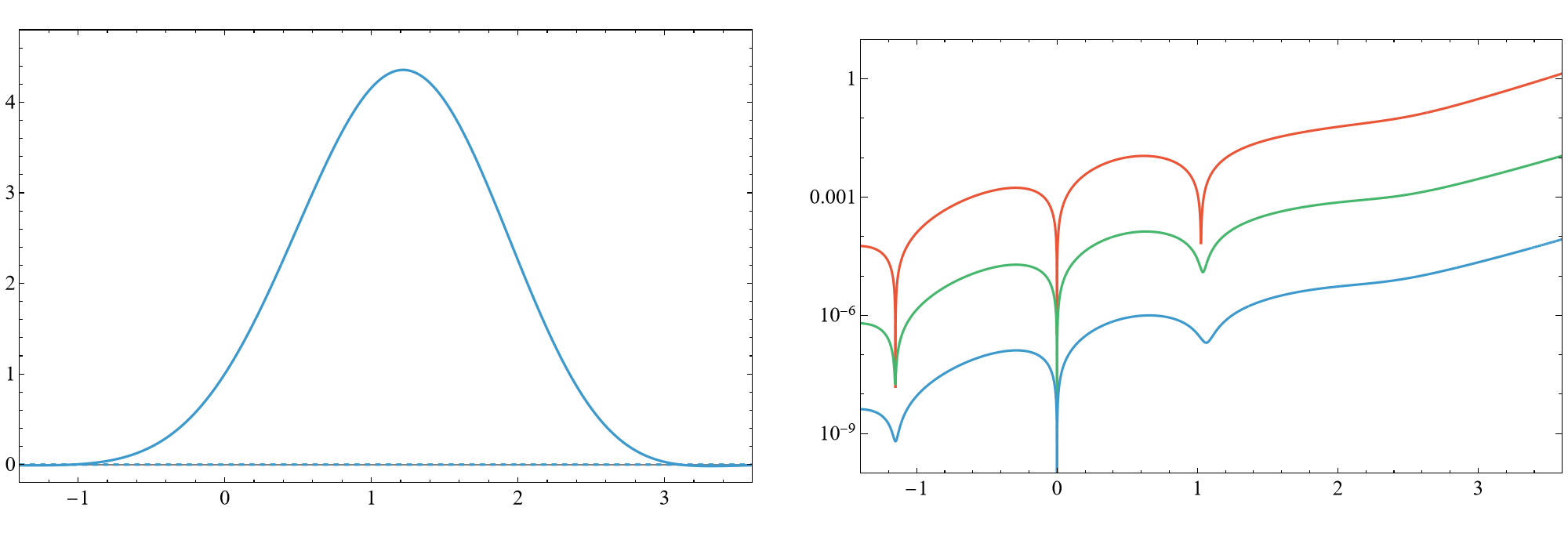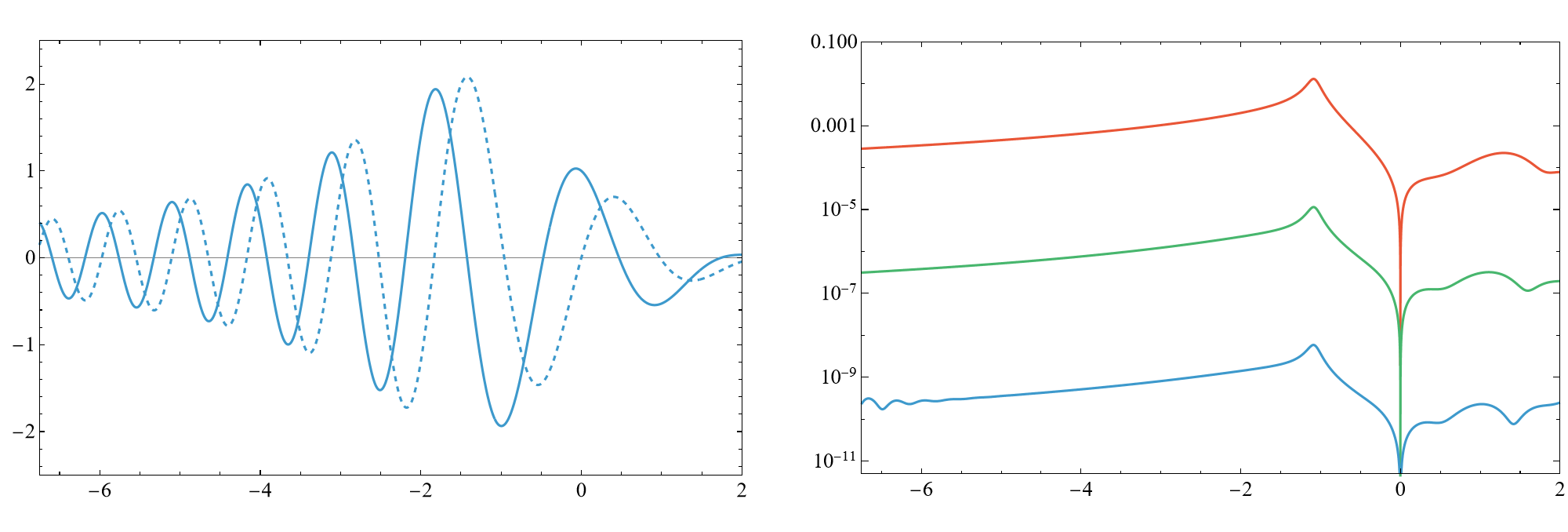- The paper presents an explicit construction of analytic eigenfunctions for deformed Schrödinger operators with arbitrary polynomial potentials, addressing both bound and resonant states.
- It employs techniques from the open TS/ST correspondence and Coulomb branch parameters to cancel singularities and produce entire eigenfunctions.
- The work reveals a breakdown of the standard oscillation theorem and uncovers enhanced spectral degeneracies at special quantized moduli known as Toda points.
Introduction
The paper establishes a novel class of exactly solvable quantum spectral problems described by difference operators of the form HN=2ΛNcosh(p)+VN(x), where VN(x) is a polynomial potential of degree N. These operators constitute a solvable deformation of standard Schrödinger operators and emerge naturally from the quantization of the Seiberg-Witten curve associated with four-dimensional N=2 SU(N) supersymmetric Yang-Mills theory. The core technical achievement is the explicit construction of analytic, exact eigenfunctions, valid for arbitrary polynomial potentials and describing both bound and resonant quantum states.
Spectral Problem Definition
The primary object of paper is the spectral problem for the operator
HN=ΛN(ψ(x+ℏ)+ψ(x−ℏ))+VN(x)ψ(x)=Eψ(x),
with VN(x)=∑k=0N−1(−1)khkxN−k and energy E. The nature of the spectral problem depends on the parity of N:
- Even N: VN(x) is confining, leading to a discrete spectrum of bound states. The operator is self-adjoint.
- Odd N: VN(x) is confining as x→+∞ but unbounded from below as x→−∞, resulting in resonances with complex energies.
A robust numerical treatment uses complex dilatation for N odd to produce fast convergence for eigenstates that display power-law decay in one direction.

Figure 1: Numerical ground state eigenfunction (E0≈0.54151+0.25905) for V3(x)=x3, computed via complex dilatation.
Construction of Analytic Eigenfunctions
The analytic eigenfunctions are obtained using the open topological string/spectral theory (TS/ST) correspondence, leveraging explicit formulas for partition functions and instanton contributions from supersymmetric gauge theory. Key steps include:
- Use of Coulomb branch parameters aI via generalized Matone relations, replacing potential moduli hk with well-controlled gauge theory parameters.
- Explicit eigenfunction expressions involving Weyl group orbits, special defect partition functions ZD, and additional entire functions n(x,a,Λ,ℏ) constructed to cancel singularities in x.
For N even:
ψNeven(x,h)=ZD(x,a,Λ,ℏ)n∈WN⋅γ∑n(x,a)+exp(ℏ2πx)ZD(−x,f(a),Λ,ℏ)n∈WN⋅(γ+eN)∑n(−x,f(a)).
For N odd (resonant case):
ψNodd(x,h)=ZD(x,a,Λ,ℏ)n∈WN⋅γ∑n(x,a)+exp(ℏπx)ZD(−x,f(a),Λ,ℏ)n∈WN⋅γ∑n(−x,f(a)).
Crucially, individual saddle terms are non-entire, developing simple poles as functions of x=aI+kℏ, but their sum yields an entire solution for arbitrary hk (verified numerically for N=2,3,4,5,6 up to cubic order in Λ).

Figure 2: Off-shell eigenfunction for V3(x), h2=−4, h3=−2.5, showing the poles in single saddles and their cancellation in the full sum.

Figure 3: Ground state, V4(x), h2=−3, h3=−0.1, illustrating the failure of the oscillation theorem and excellent agreement with numerical diagonalization.
Quantization and Square Integrability
For generic energies, these analytic solutions are not L2-normalizable. Square integrability is achieved at discrete energy values E=Ek, determined by an explicit quantization condition derived from the analytic structure of the eigenfunctions and the underlying Fredholm determinant:
Algebraic and Geometric Insights
The spectral problem is closely related to integrable systems, specifically the Baxter equation for the closed quantum Toda lattice. The connection is manifest in the use of Weyl orbits, SU(N) representations, and structure of the analytic eigenfunctions. In particular:
Asymptotic Behavior and Physical Interpretation
Eigenfunctions exhibit unconventional asymptotics:
- For N even, exponential decay at both infinities for on-shell states.
- For N odd, exponential decay as x→+∞ and power-law decay (oscillatory) as x→−∞, characteristic of resonance states—yet still square-integrable.
Strong numerical agreement is observed between the constructed analytic solutions and numerical diagonalization in both asymptotic regimes and for intermediate values of x.

Figure 6: Ground state for V3(x) with h2=−5, displaying precise match between analytic and numerically computed eigenfunctions.
Derivation from Open Topological String Theory
The construction of eigenfunctions is derived rigorously from the open TS/ST correspondence on toric YN,0 Calabi-Yau geometries. The difference operators arise as quantized mirror curves, with analytic solutions constructed from sums over root lattices and canonical modifications ensuring background-independence and analyticity for both open and closed moduli.
Implications and Future Directions
The established correspondence yields explicit analytic solutions for deformed Schrödinger-type operators, providing a rare solvable model for higher polynomial potentials. The analytic control offered by the TS/ST correspondence and gauge theory methods hints at broader applicability, including potentials with matter and more general gauge groups.
Key implications include:
- New families of quantum systems with exact spectral data for both bound and resonance states.
- Breakdown of textbook oscillation theorems in quantum difference equations, necessitating new mathematical frameworks.
- Enhanced spectral degeneracies and reality conditions for spectra at special moduli values, relevant for integrability theory and supersymmetric gauge theory.
Potential future developments include:
- Extension to matter-coupled Seiberg-Witten geometries.
- Deeper mathematical analysis of difference operators with unbounded potentials.
- Applications to quantum integrable systems and the paper of resurgence phenomena in non-perturbative quantum mechanics.
Conclusion
This work provides a complete analytic solution to the spectral problem of polynomially deformed difference Schrödinger operators arising from supersymmetric gauge theory quantization. Eigenfunctions can be constructed for arbitrary polynomial degrees, are explicit and entire in x, and are rigorously matched to numerical methods. The analysis uncovers new spectral phenomena, such as non-standard node distribution and enhanced degeneracies, and builds technical bridges between quantum mechanics, supersymmetric gauge theory, and topological string theory. The results invite extensive further exploration in both mathematical physics and integrable systems.





